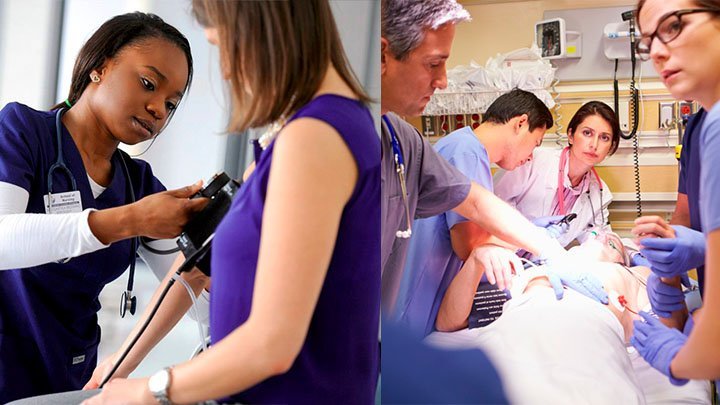The coursework of the CNA classes is designed to prepare students for fulfilling their job responsibilities effectively. Students learn theoretical concepts during the classroom session, while the practical skills are learned in the real medical settings.

Coursework of Theoretical CNA Classes
The following topics are covered in the classroom lecture:
- Human Anatomy
As nursing assistants work directly with the patients, it’s essential for them to have the knowledge of human body. Human anatomy classes provide an insight about the structure of the individual’s body. It helps the nurse aides in better handling and providing improved care to the patients.
- Basic Care
It involves caring for the resident when death is imminent, caring for the resident’s environment, recognizing abnormal changes in body functioning and recording vital signs. It also teaches the prospective CNAs how to assist patients in dressing, bathing, feeding and grooming.
- CPR
In the cases of emergency, CNAs may be required to administer CPR skills to the patients. It is an indispensable skill as it decides the life or death of the sufferer. Therefore, nursing classes also teach this skill to the patients.
- Communication Skills
Communicating with the patients and understanding their requirements is a part of nurse aide’s duties. They have to interact not only with the patients, but also with the other nurses, doctors and family members of the sufferers. The training programs pay special attention towards this skill, so as to prepare the students to fulfil their duties effectively and efficiently.
- Nutrition
Taking classes on nutrition is imperative because as a certified nursing assistant, you will have to provide the patients with food that meets their nutritional needs. It’s equally important to have an understanding of the nutritional value of the diet provided to the patients. A healthy diet helps the patient in recovering fast.
- Ergonomics
Using the appropriate ergonomic processes will prevent injuries to the nurse aide or to the patients. This subject matter teaches how to use medical equipments, such as wheelchairs, adjustable hospital beds, etc. and to turn and move the bed-ridden patients.
- Documentation
One of the tasks of a CNA is to prepare documentation of the patient’s reports. The training classes impart knowledge about it to the potential nursing assistants.
- First Aid and Disease Prevention
A competent nurse aide must be acquainted with the basic first aid procedures, including CPR and injury stabilization. The instruction programs instructs students about how to maintain sanitation and hygiene in a medical facility, how to keep the medical equipments infection free, correct disposal of syringe, etc.
- Medical Procedures and Protocols
The knowledge of medical protocols and procedures assist certified nursing assistants in protecting themselves from any mishappening.
- Resident’s Rights
This subject matter involves promoting resident’s rights, providing confidentiality and privacy, security and care of maintaining resident’s personal possessions, assisting with resolving grievances, etc.
Coursework of Practical CNA Classes
During the hands-on-practice session of the training, students learn the following skills:
- Washing hands.
- Using a transfer belt to shift a patient from the bed to the wheelchair.
- Positioning a patient on his/her side.
- Measuring and recording the height and weight of the ambulatory patient.
- Measuring and recording the urinary output, blood pressure, pulse rate and temperature.
- Removing and donning the personal protective equipment.
- Assisting patients in feeding, bathing, grooming, moving and exercising.
- Wound dressing.
- Preparing the patient for surgery.
- Collecting urine and blood samples for diagnostic test.
- Prevention of bed sores
